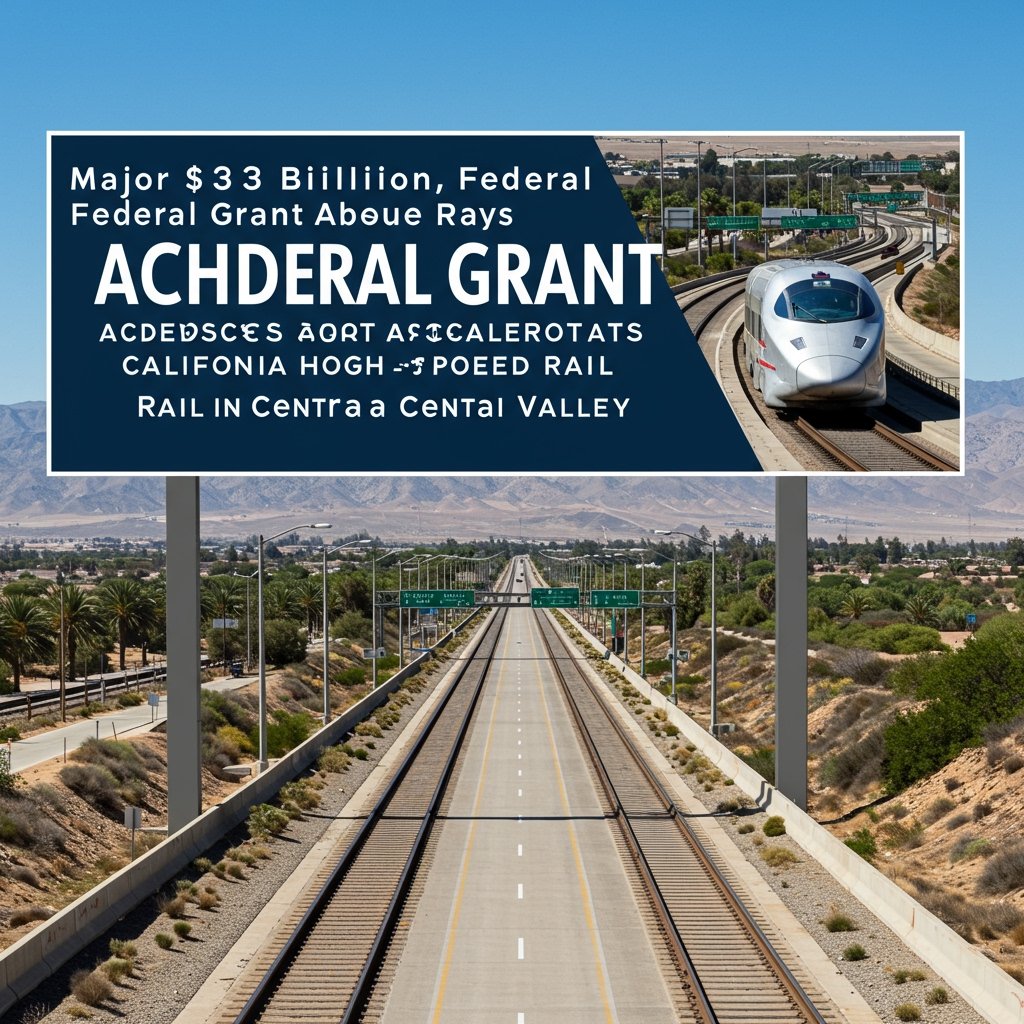Federal Investment Propels California High-Speed Rail Construction
The California High-Speed Rail Authority (CAHSRA) has announced a pivotal moment for the state’s ambitious transportation initiative: the securing of a substantial new federal grant. This critical funding infusion, amounting to 3 billion USD, has been awarded by the Federal Railroad Administration (FRA). The announcement marks a significant milestone, providing a robust financial boost specifically designated to accelerate construction progress on the foundational 119-mile initial operating segment. This vital section of the planned statewide network is situated within the Central Valley and is designed to connect the cities of Bakersfield and Merced.
This significant allocation of federal dollars arrives at a crucial juncture for the project, which has faced various challenges throughout its development, including funding complexities and timeline adjustments. The 3 billion USD grant from the FRA underscores a strong commitment from the federal government to the realization of high-speed rail in the United States, and particularly to the progress being made in California’s Central Valley. The CAHSRA, as the recipient authority, is tasked with the diligent and effective deployment of these funds to maximize impact on the ongoing construction activities.
Officials associated with the CAHSRA and involved in the project’s execution have indicated that the newly acquired funds will be strategically directed. The primary target for this substantial investment is the acceleration of work on major infrastructure components within the designated 119-mile corridor stretching from Bakersfield to Merced. This phase of construction is foundational, involving complex engineering and significant civil works. Such components typically include the construction of viaducts necessary to elevate the tracks over roads, waterways, and agricultural land, minimizing disruption and enabling high speeds. It also encompasses the building of bridges, underpasses, and overpasses designed to create a fully grade-separated railway essential for safe and efficient high-speed operations. Furthermore, critical earthwork, preparation of the trackbed, and foundational elements for future signaling and power systems fall under this umbrella of major infrastructure.
The specific focus on these core infrastructure elements is intended to propel the physical construction forward at an increased pace. By dedicating the 3 billion USD grant to these foundational works, the CAHSRA aims to overcome potential bottlenecks and accelerate the completion of the heavy civil engineering required before track laying and systems installation can be fully realized across the entire segment. This strategic use of funds is seen as essential for maintaining momentum and achieving key construction milestones more rapidly than might otherwise be possible under existing funding streams alone.
The overarching goal articulated by officials is clear: this funding is designed to help keep the project on track towards a vital objective – the potential commencement of passenger service on this specific 199-mile phase by the late 2020s. Achieving operational status for the Bakersfield-Merced segment is critical. It represents the first tangible outcome of the multi-billion dollar investment in high-speed rail and serves as a crucial building block for the eventual expansion of the system north to the San Francisco Bay Area and south to Los Angeles and Anaheim. Proving the operational viability and ridership potential of this initial segment is also vital for demonstrating progress and attracting further investment required to complete the full statewide network.
The Central Valley segment was chosen as the initial construction focus due to several factors, including relatively easier right-of-way acquisition compared to urban areas and its strategic location as a central spine from which the network can grow. While the segment itself does not connect major metropolitan centers directly in this first phase, it lays the groundwork, literally and figuratively, for connecting the economically vital Central Valley communities and providing a future link to the state’s major economic hubs. The FRA grant specifically targeting this section reinforces its importance within the national vision for improved rail infrastructure.
The CAHSRA has been actively engaged in construction activities across this corridor for several years, with work zones spanning multiple counties. The infusion of 3 billion USD allows for either the acceleration of existing work packages, the initiation of new, previously deferred critical path elements, or the scaling up of resources – such as labor, equipment, and materials – to compress schedules where feasible. The effective management and deployment of these funds will be under close scrutiny, given the project’s high profile and its significance for California’s future transportation landscape.
This federal investment is a testament to renewed federal support for large-scale infrastructure projects and aligns with broader national goals of improving transportation networks, reducing reliance on fossil fuels, and fostering economic development. For the Central Valley, the construction phase itself generates jobs and economic activity, and the eventual operation of high-speed rail is anticipated to offer improved connectivity, reducing travel times and potentially spurring economic growth in communities along the corridor.
While challenges remain for the overall project, including securing funding for the extensions into the metropolitan areas, the 3 billion USD grant from the FRA represents a major step forward specifically for the segment currently under construction. It provides the necessary financial muscle to push through complex engineering phases and maintain the ambitious timeline targeting service commencement by the late 2020s for the Bakersfield-Merced line. The CAHSRA‘s ability to leverage this federal funding effectively will be key to demonstrating the project’s viability and sustaining momentum towards its ultimate vision of connecting Northern and Southern California via high-speed rail. The focus on major infrastructure components with this grant is a strategic move aimed at solidifying the physical foundation upon which California’s high-speed future will run.



















